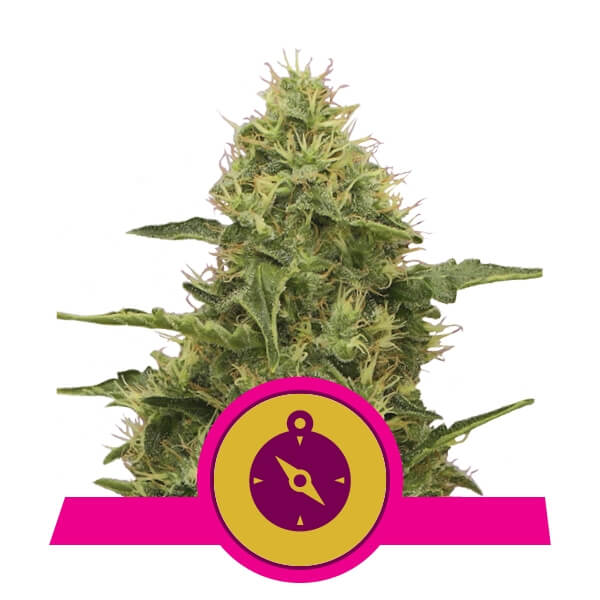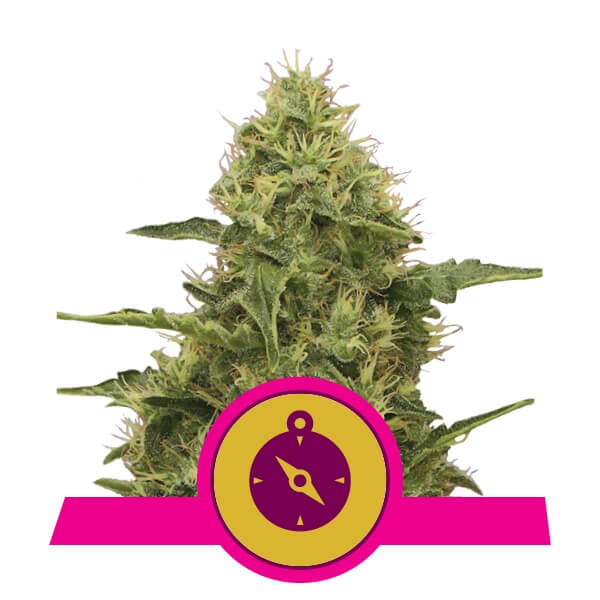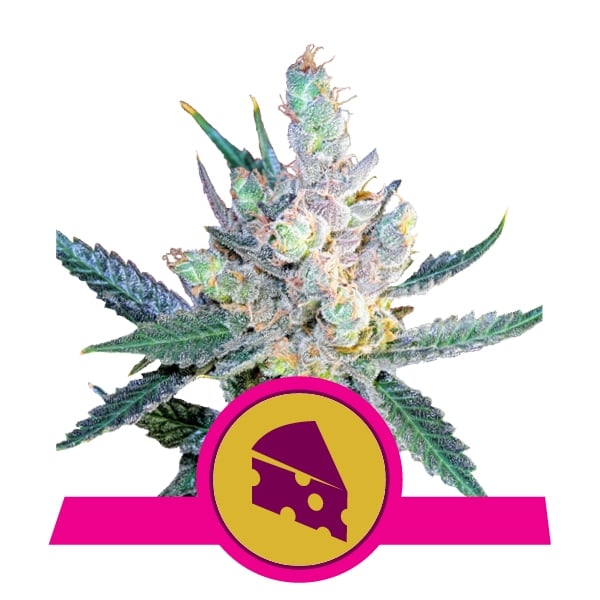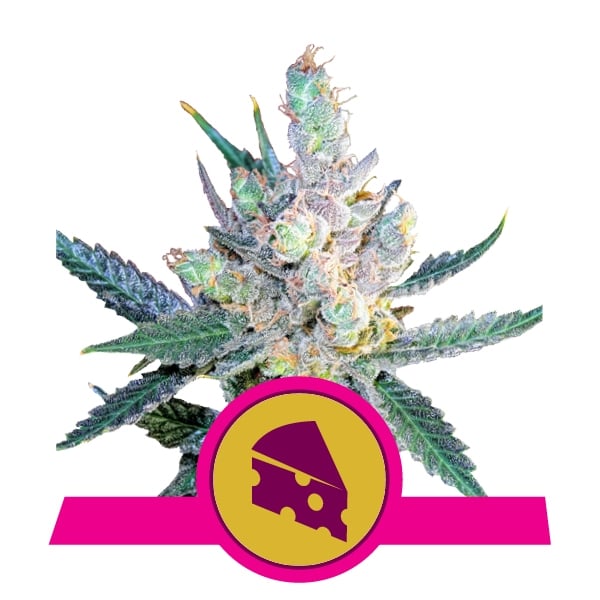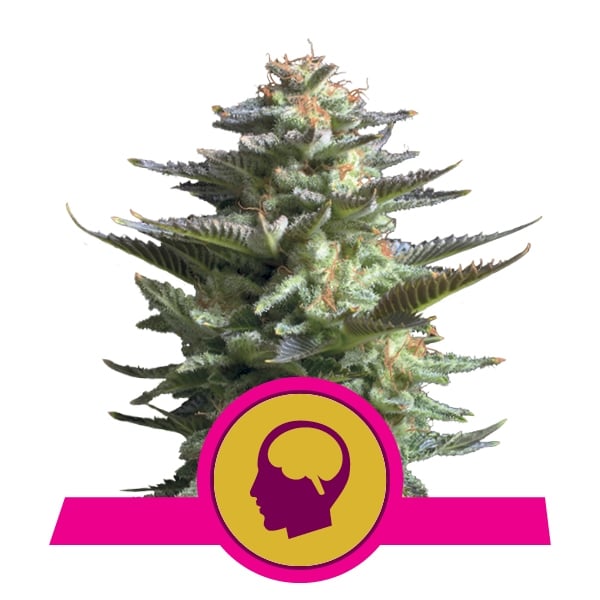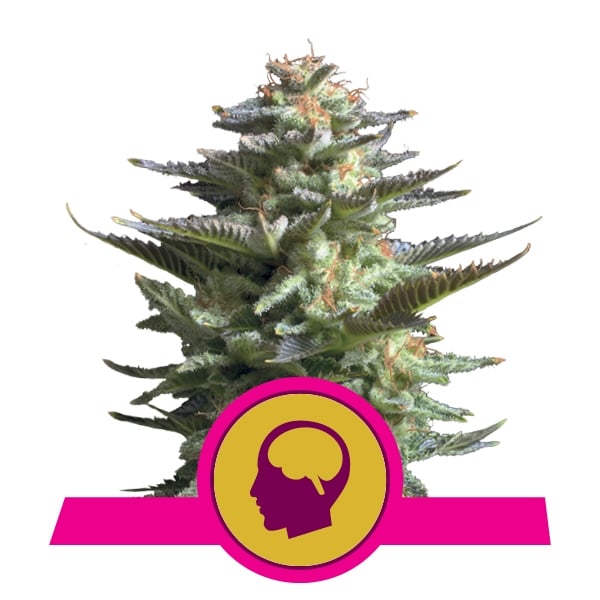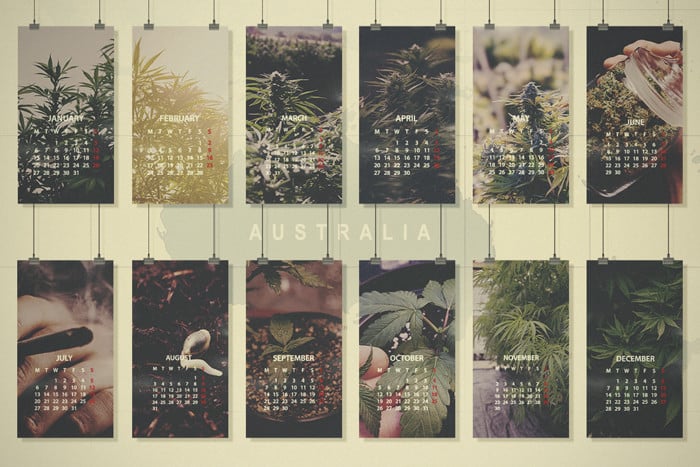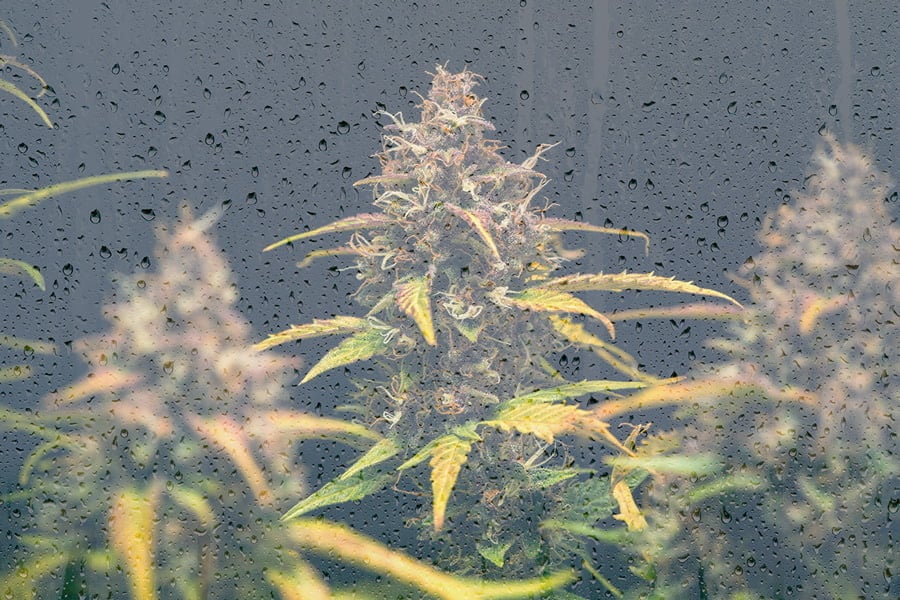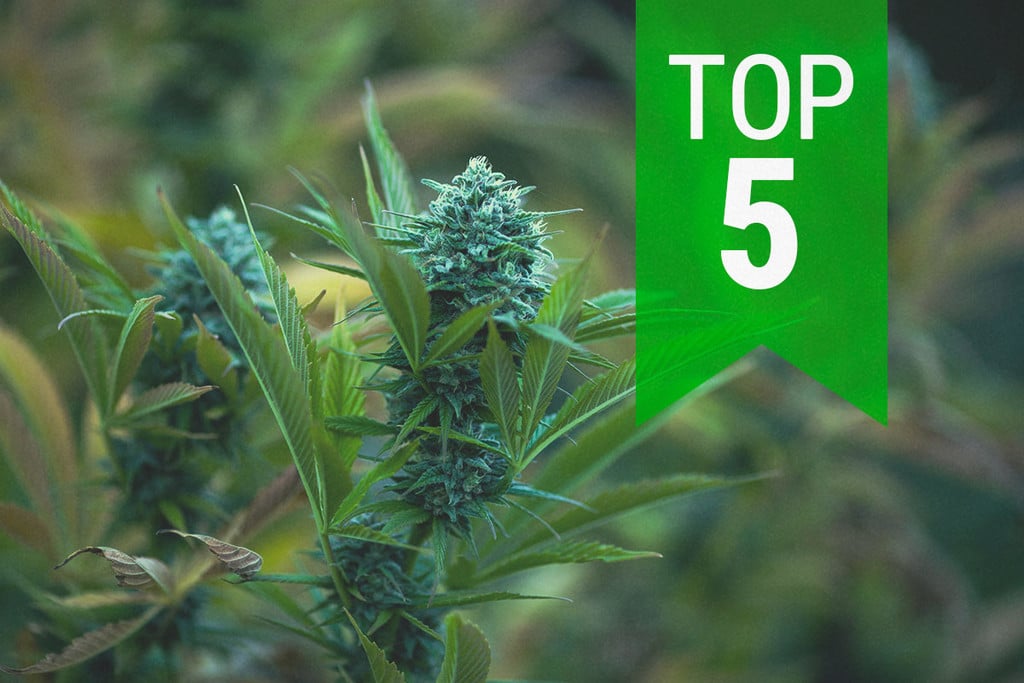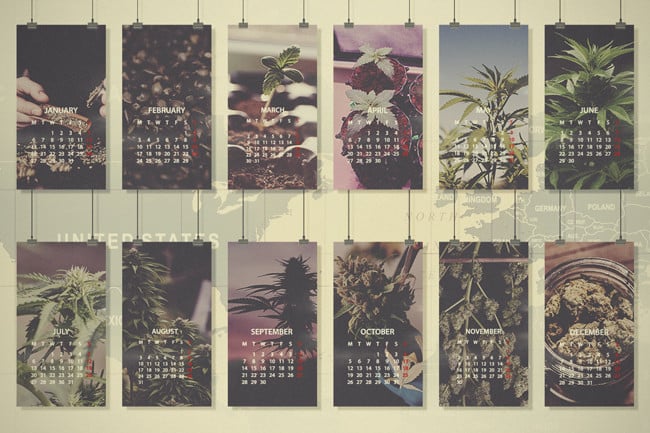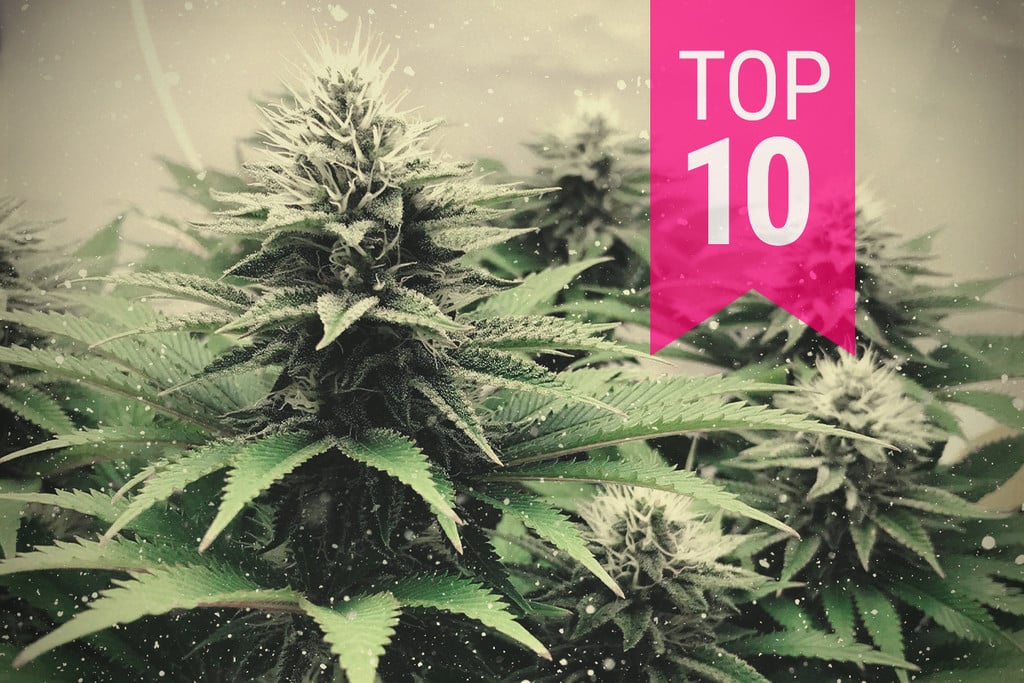.
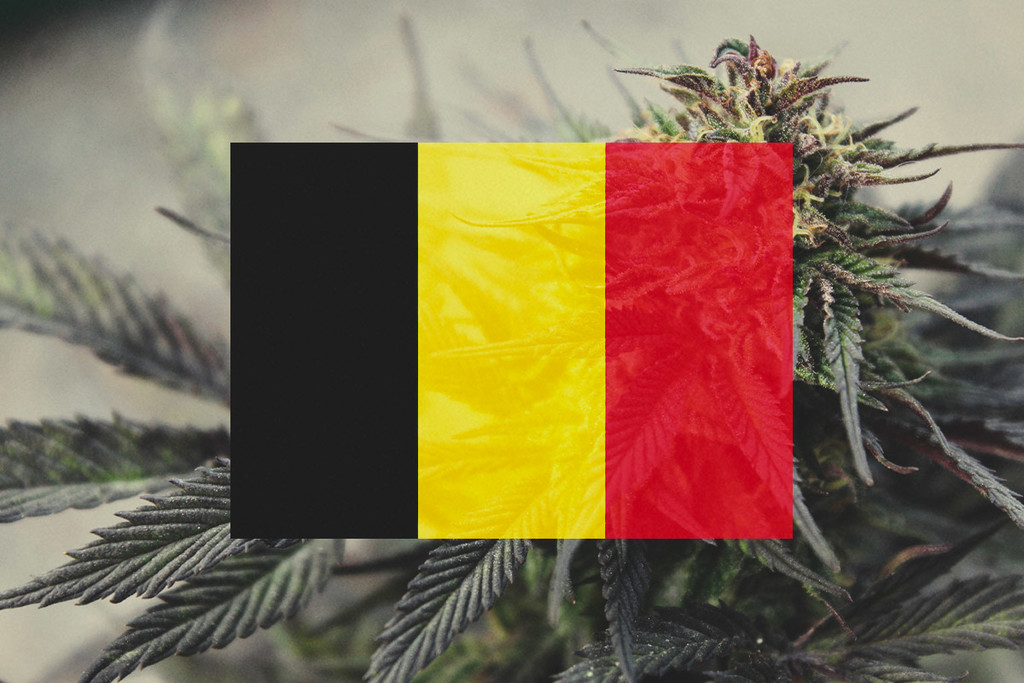
Growing Cannabis Outdoors In Belgium: Month-By-Month Guide
Researching if you can grow weed outdoors in Belgium? Well, close all of those tabs! In our month-by-month guide for 2024, we cover everything you need to know to achieve a successful harvest.
Growing cannabis outdoors in Belgium: A complete month-by-month guide for 2024.
Contents:
Known for its exquisite food and beverages, Belgium also knows how to grow good weed. Sure, talented breeders and growers remain underground due to restrictive laws, but it doesn't stop them from getting creative and harvesting crops year after year. Things can get pretty rainy in the country, but growers have adapted to these conditions and find it super easy to pull in kilos of high-quality flowers. Discover how to grow cannabis outdoors in Belgium below.
GROWING CANNABIS IN BELGIUM IN 2024
Belgium experiences an oceanic climate influenced by both the North Sea and the Atlantic Ocean, resulting in cool summers and moderate winters. The North Atlantic Drift—an ocean current that flows northeast due to the prevailing winds—helps the country maintain an average annual temperature of 10℃.
As one of Europe's smaller countries, Belgium covers an area of only 30,689km². This small landmass means the entire nation experiences a very similar climate, except for small variations. The west of the country—bordering the Atlantic Ocean—experiences an earlier last frost. In contrast, the eastern inland experiences significantly more rainfall. The entire country sees consistent yearly rain, although the period between April and September usually stays fairly dry.
Before we delve into the best ways to grow weed in this country, let's check out the legal status of the herb in Belgium.
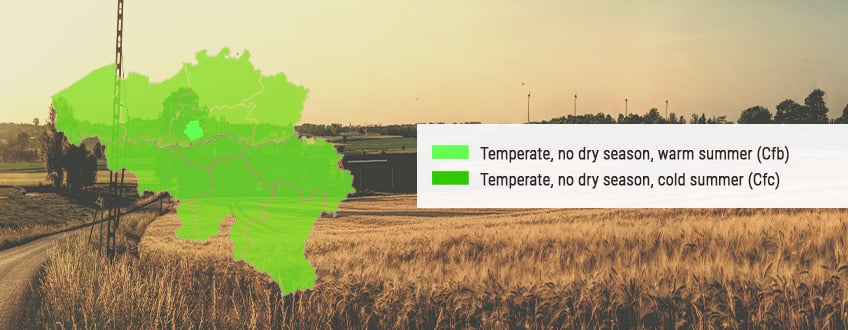
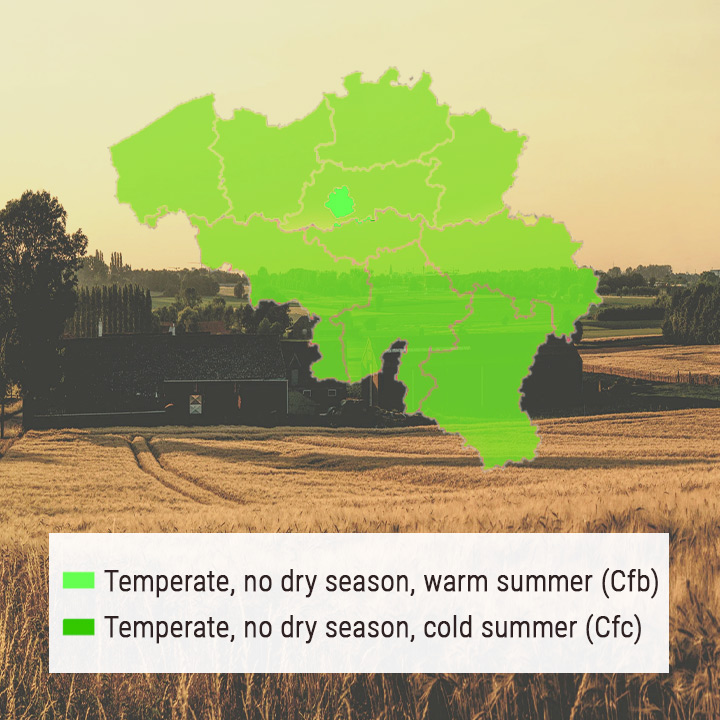
IS WEED LEGAL IN BELGIUM?
Belgium has fairly relaxed cannabis laws in comparison to some of their European neighbours. With that said, the government still classifies cannabis as an illegal substance. Users found possessing three grams or less face anything between a slap on the wrist and a €120–200 fine. That said, the cultivation of a single plant rarely results in prosecution.
However, the police only offer so many chances. Get caught possessing cannabis three times in less than a year, and you could face one year in prison. People caught carrying cannabis in public or near schools may also receive a harsher fine of €8,000–800,000 and three months to one year behind bars.
Fines and jail time step up a gear when it comes to the sale of cannabis—in the ballpark of €1,000–100,000 and sentences between 5–20 years.
Like much of Europe, Belgium has embraced the cannabis-based preparation Sativex in clinical settings. Although Belgium dishes out heavy fines and prison sentences, the country's policy regarding the cultivation of a single plant appears uniquely relaxed. As long as growers do so in the privacy of their own home and keep things low-key, they should be able to cultivate enough for personal use without running into many problems.
A GUIDE ON GROWING CANNABIS OUTDOORS IN BELGIUM
Every country has unique challenges when it comes to growing, and Belgium is no exception. However, growers consistently achieve great results. Use the guide below to make sure you raise healthy, productive plants in the Belgian climate.
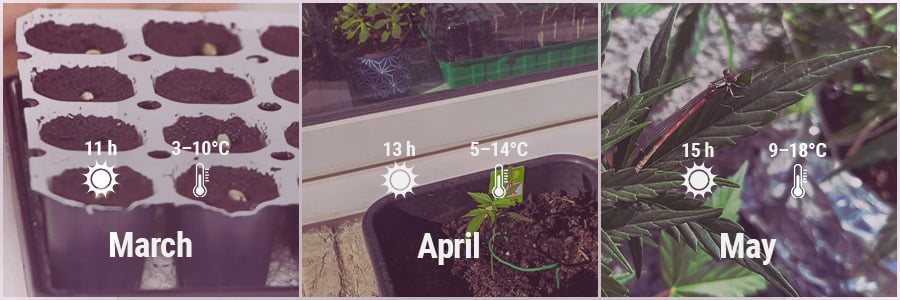
MARCH
• Day length March 1st: 10h 58m
• AVG temperature: 3–10°C
Early spring has arrived, but hold your horses. It can be tempting to get seeds into the ground as soon as the first signs of outdoor life emerge, but things are still pretty cold in Belgium, and the risk of frost remains high. Thankfully, you can get a head start by launching your operation indoors.
Germinate your seeds, and place your trays of seedling pots on a south-facing windowsill or under a set of appropriate grow lights. To do so, simply place your seeds between some lightly misted paper towels and wait a couple of days for their roots to emerge. Alternatively, utilise the Easy Start grow kit to boost germination rate and support seedling health.
After you've tended to your seeds, head out into the garden and prep your space for the season to come. Clean out your greenhouse or polytunnel and find an ideal sunny spot in the garden for your containers. Dress your beds with a good layer of high-quality compost and top them off with a mulch layer to stop weeds from running the show.
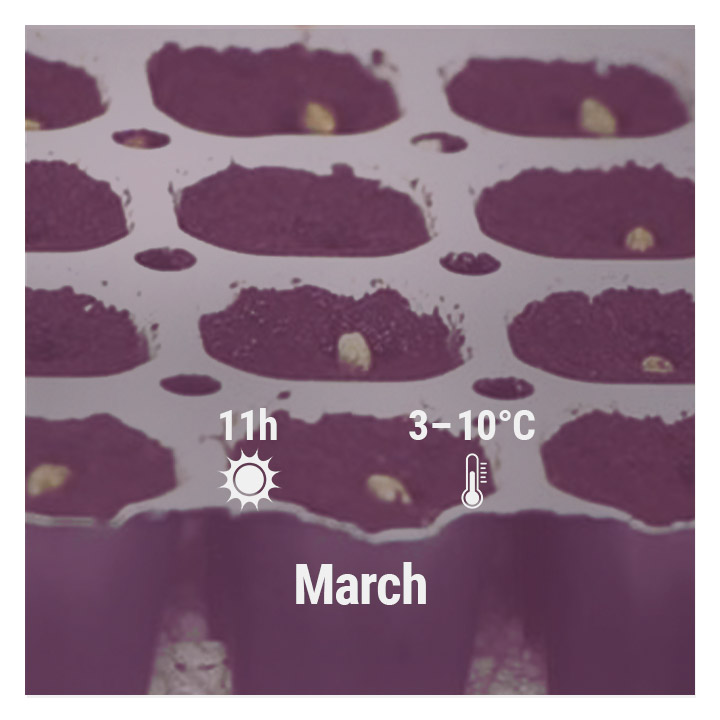
APRIL
• Day length April 1st: 12h 58m
• AVG temperature: 5–14°C
Both daylight hours and average temperature increase significantly as spring continues to unfold. Growers in the west of the country can start transplanting their seedlings into containers and beds situated in greenhouses and polytunnels. The last frost will pass between April 1st–10th in areas around Ghent, Bruges, and Kortrijk. Cultivators in the microclimate surrounding Ostend should see their last frost much earlier, but should still move into greenhouses first just to be safe.
The frost risk in most of eastern Belgium remains high throughout April, and growers should keep their seedlings either indoors or in a heated greenhouse. However, other microclimates surrounding Charleroi, Beauvechain, and Diest provide warm pockets and follow the same frost pattern as the west of the country.
Regardless of where you live in Belgium, April provides the right conditions to start sowing hardy companion plant varieties. Species such as peppermint and yarrow can handle the chilly temperatures and will be ready to defend your plants against pests several months down the line.
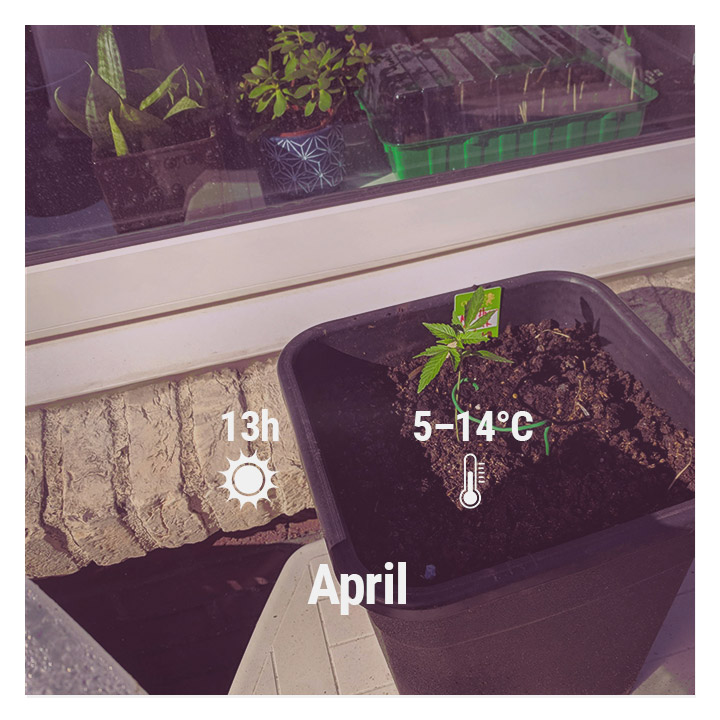
MAY
• Day length May 1st: 14h 49m
• AVG temperature: 9–18°C
May ushers in late spring. Trees start to explode with greenery, wildflowers begin blooming everywhere, and the insect world comes to life. Belgium becomes a safe frost-free zone at this time of year, allowing growers from all over the country to move their plants into greenhouses and, eventually, outdoors.
Before you introduce your young vegging plants into their pots, you'll need to whip up a nutrient-rich potting mix to see them through the season. Get your hands on some high-quality compost and perlite to add some healthy aeration to your soil. Add Easy Boost Organic Nutrition into each pot to ensure your plants have all of their nutritional bases covered.
We recommend placing this blend into the RQS Fabric Pot. This high-performing geotextile vessel offers optimal levels of hydration and aeration, keeping the root system healthy and free of fungal pathogens.
Cultivators growing in beds need to fill them with nutrients. Dress each bed with a layer of compost, worm castings, and manure. Water the surface to allow the nutrients to penetrate the soil, and top with a layer of mulch.
Both bed and container growers should consider adding mycorrhizal fungi to their growing medium. These beneficial microorganisms form a mutually beneficial relationship with the roots. In return for plant sugars, they extend the root network and enhance nutrient uptake.
Growers in the east of the country can expect heavier rainfall during May. Get ready to move your pots indoors, and erect a tarp over your beds if things get out of hand.
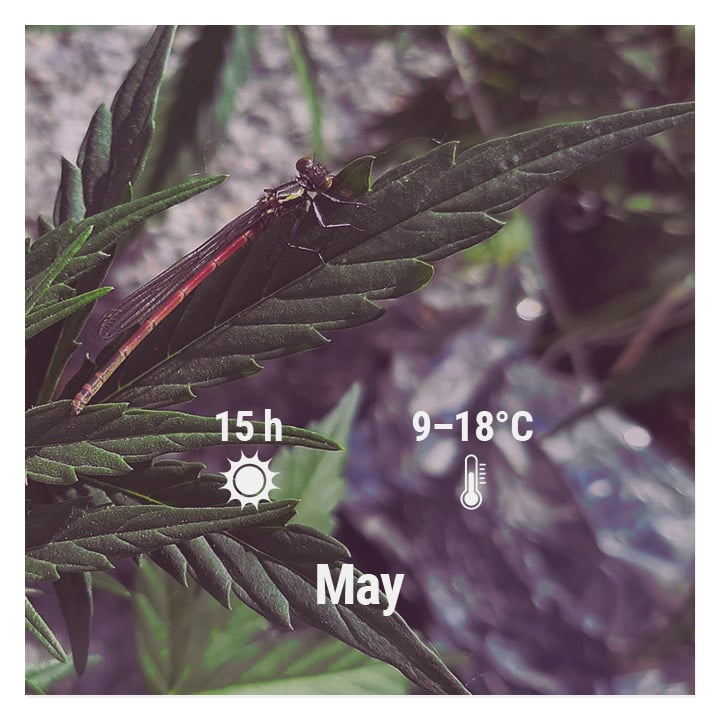
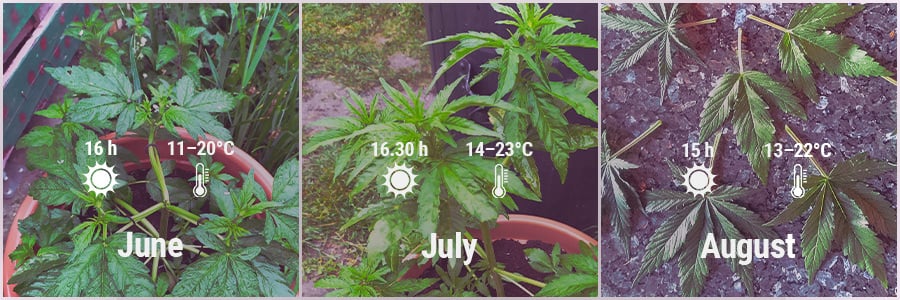
JUNE
• Day length June 1st: 16h 13m
• AVG temperature: 11–20°C
June marks the beginning of summer! Your plants will be storming through the vegetative phase at this point in the growing cycle. For most of Belgium, June sees the least rain out of all the summer months.
Growers around Brussels will experience around 14 days of rain—a total of 50mm—contrasted by 200 hours of sun. Cultivators in the western city of Bruges should see around 30mm of rain over 10 days, alongside a hefty 230 hours of sunshine.
For growers in the wetter southeast of the country, June brings a different story as one of the rainiest months of the year. Make sure your plants are protected and don't get exposed to excess moisture. Expect 80mm of rain over 13 days and around 200 hours of sunshine.
As a flat country, wind can often tear from the coast through the eastern regions. If you're growing lanky sativa strains, be sure to support them with stakes in case of strong, stem-snapping gusts.
Your maturing plants will also be ready for training at this point in the season. Utilise low-stress training to maximise yields, open up the canopy, and improve airflow.
Finally, your plants will have munched through a lot of their nutrients at this point. Keep up with their demands during the vegetative phase with Easy Grow Booster Tablets. This formula provides your plants with all the minerals they need to thrive. Simply add one tablet to 3–5 litres of water every time you water your crop.
The warmer weather will allow you to start sowing more delicate companion plant species such as chamomile and basil. Aside from attracting beneficial insects into your garden, these species can be used as culinary herbs in the kitchen and to make soothing herbal teas.
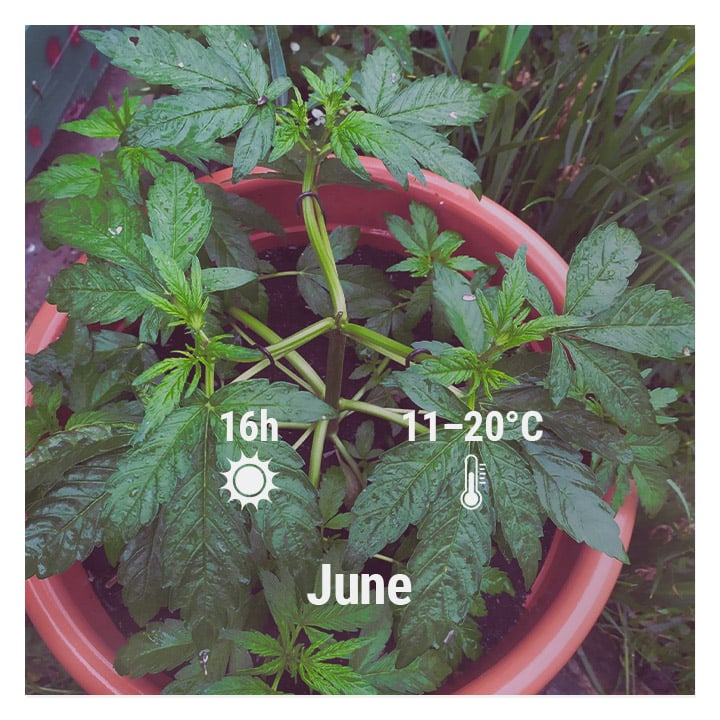
JULY
• Day length July 1st: 16h 26m
• AVG temperature: 14–23°C
With July comes the peak of summer. Temperatures hit highs of 23°C and areas can become dry following heat waves. However, the weather varies from year to year. If you're facing endless sun and high temps, be sure to water appropriately. If you're raising only a small crop, watering by hand will get the job done. If you're overseeing a larger operation, consider setting up a drip irrigation system to minimise this chore.
Realistically, July often sees the most rainfall of the year throughout Belgium. Brussels, Bruges, and Chiny see 98mm, 70mm, and 68mm, respectively. As a result, some growers might elect to move their containers into greenhouses for the whole month.
Continue to train your plants throughout July to maximise light exposure during the flowering phase. Make all your final adjustments now, as plants don't tolerate the practice during flowering.
You'll also need to sex your crop during July. Check the nodes—where the branches meet the main stem—for signs of pre-flowers. These small structures will allow you to assess the sex of each plant and remove pollen-releasing males from the grow space. Females feature a single protruding hair, whereas males feature hairless sacs.
Keep up with your nutrient regimen and dress your beds once again with nutritious worm castings.
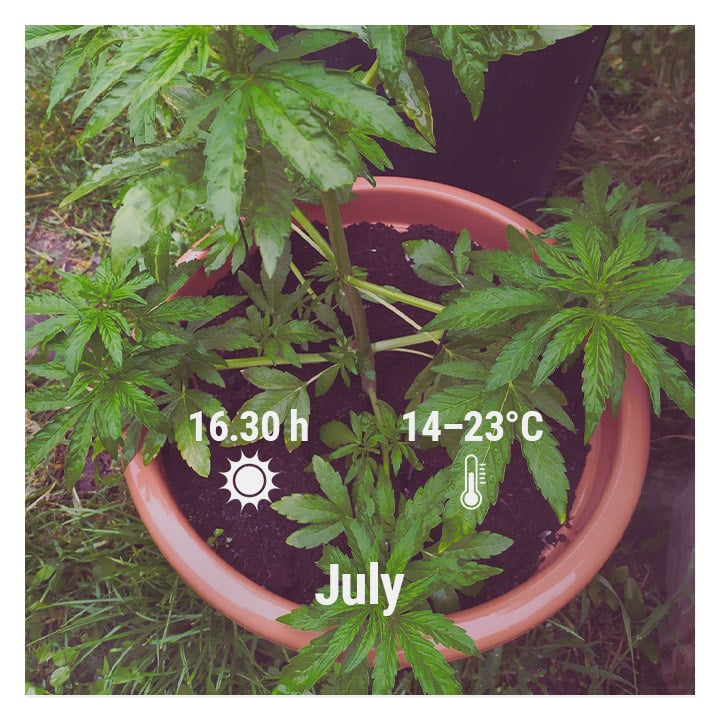
AUGUST
• Day length August 1st: 15h 18m
• AVG temperature: 13–22°C
The summer sun continues to shine now and then, with most regions seeing around 200 hours throughout August. Despite the pleasant weather, daylight hours are starting to decrease, and autumn begins its approach. Photoperiod cannabis plants detect this shift in the light cycle and enter the flowering phase.
You'll need to feed your flowering plants a slightly different diet to support the best yields possible. At this point, they'll be craving higher levels of potassium, calcium, and magnesium, and a lower level of nitrogen. Easy Bloom Booster Tablets provide all the necessary nutrients in the right quantities. Just add them to your water every time your plants need a drink. Dress your beds once again, this time with bone meal, kelp meal, and more worm castings.
Add defoliation to your list of jobs to get done in early August. Cut away overshadowing fan leaves to introduce more light and fresh air into the developing canopy. Just don’t overdo it. A few leaves per session is good.
Average rainfall will drop slightly around Brussels and Bruges. Take your pots out into the garden and let them soak in around 200 hours of sun over the month. Growers in more easterly regions still need to be wary of excess rain, with August bringing more showers than the previous month.
Make it a habit to observe your crop regularly in the coming months. Check the leaves for signs of nutritional deficiencies. Yellowing leaves and curled tips often hint that your plant needs a certain mineral. Use this guide to deficiencies to correct any problems, and learn how to fix it here.
Did you grow any autoflowering cultivars? If you have a penchant for these varieties and you have planted them mid-June, get ready to harvest them towards the end of August. Flush your crop for two weeks before harvesting, drying, and curing.
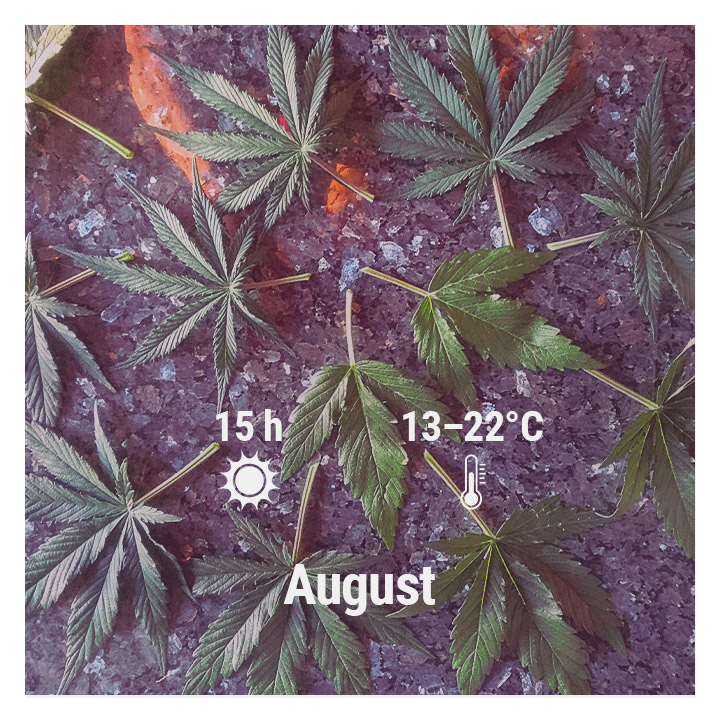
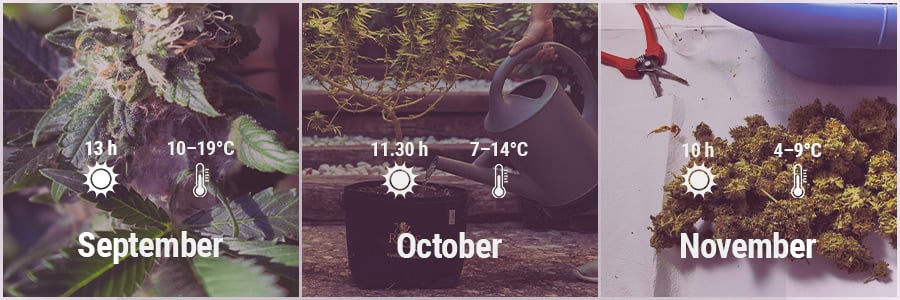
SEPTEMBER
• Day length September 1st: 13h 30m
• AVG temperature: 10–19°C
Autumn arrives. You'll notice fallen tree leaves beginning to build up, but your cannabis plants will still be going strong! Keep up your defoliation efforts to ensure air flows freely through the canopy.
Rainfall will continue to decrease around Brussels. If the top of your soil becomes completely dry, switch on your irrigation system or water manually. Rainfall elsewhere will remain almost the same as the previous month, so cover your plants and water accordingly.
Continue to observe all of your plants, this time a little closer. Bring a magnifying glass out into the garden and check out a few flowers of each specimen. Cannabis flowers are dense and hold a lot of moisture, making them the perfect breeding ground for numerous fungal pathogens. Use our handy guide on identifying and treating mould to stay safe and prepared.
Shorter-flowering Indicas will be ready to harvest during September. Flush your plants and get your mason jars ready. Cut them at the base and hang them out to dry before curing them for storage. Oh, and don't forget to craft some scissor hash to sample your bounty.
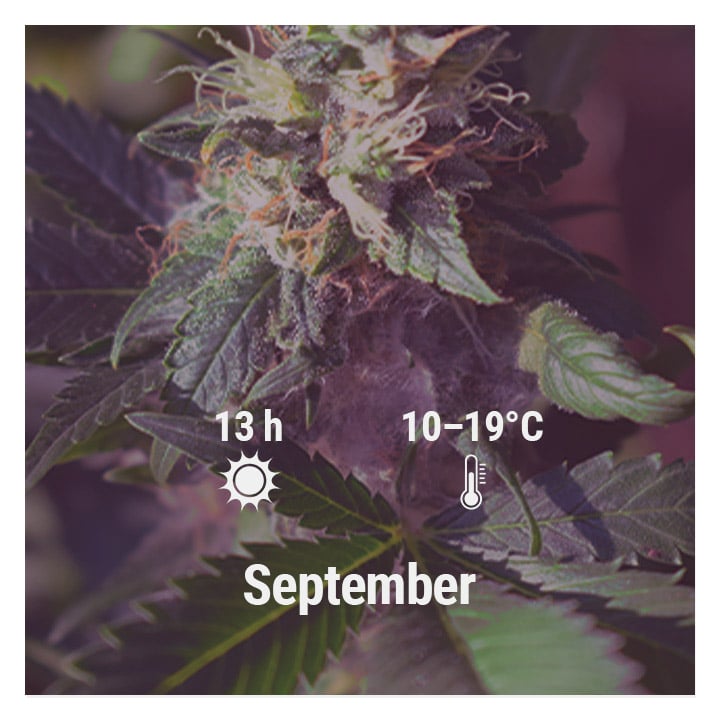
OCTOBER
• Day length October 1st: 11h 36m
• AVG temperature: 7–14°C
Autumn tightens its grip. You might even be able to see your breath in the air when you head into the garden early in the morning. You'll also notice the rich smell of aromatic terpenes as you stroll through your garden and greenhouse—one of the many rewards of growing your own cannabis.
At this point, your Sativa-dominant cultivars will be ripening up nicely. Their trichome count will begin to surge, and their pistils will start appearing dark orange. They'll be ready to harvest at varying times throughout the month, so make sure to give your plants two weeks of flushing before making the chop.
Rainfall will remain steady throughout the entire country at around 80mm per month. If you have the resources, move your potted longer-sativas into greenhouses and polytunnels to prevent too much moisture from building up.
Growers in the north of the country—around Antwerp—and those in the south need to be wary of the first frost occurring between October 21–31st. Move plants to shelter where possible and get to flushing.
Late October marks the end of the outdoor growing season in Belgium.
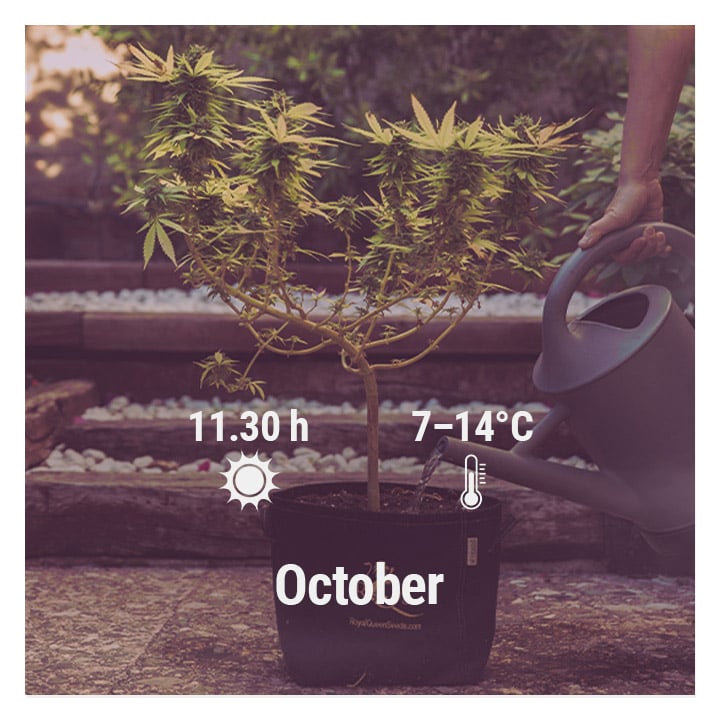
NOVEMBER
• Day length November 1st: 9h 42m
• AVG temperature: 4–9°C
The first frost will strike central Belgium between November 1st–10th, and the west of the country between November 21st–30th.
Once your plants are out of the ground, start ticking off minor jobs for the next season if you have the time. Clear out and cover your beds, and clean out your greenhouse or polytunnel.
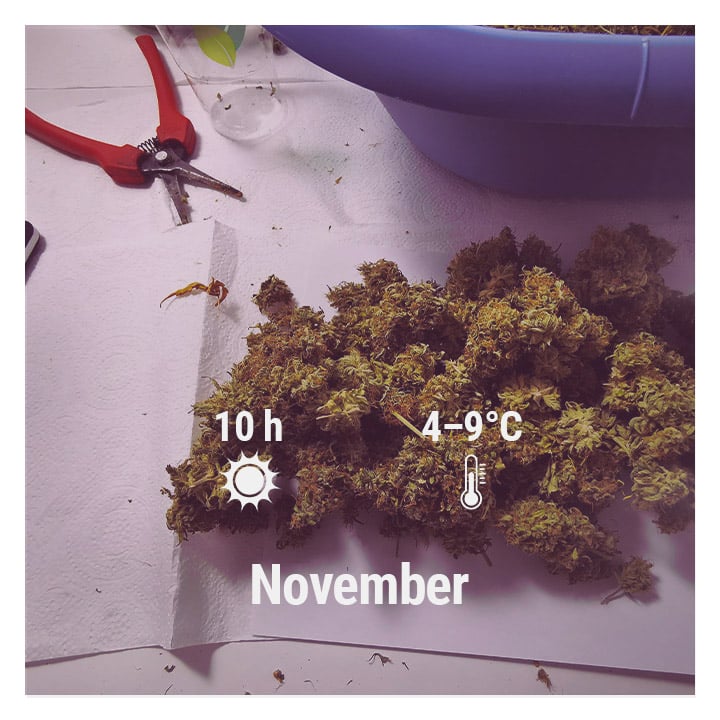
PROS AND CONS OF GROWING CANNABIS OUTDOORS IN BELGIUM
Belgium provides a moderate environment for growing weed outdoors. Despite some environmental challenges, cultivators can certainly harvest large, high-quality yields if they put in the effort. Of course, there are both advantages and disadvantages to growing in the country.
Pros:
• Extremely low water bill
• Low risk of heat waves and excess sun
• Relaxed laws for small-scale cultivation
Cons:
• Heavy rain increases mould risk
• Early first frost in the southeast
• Heavy penalties for larger operations
TOP 3 RQS STRAINS RECOMMENDED FOR OUTDOOR GROWING IN BELGIUM
Many different strains will grow well outdoors in Belgium, but some perform much better than others. The three strains below are perfectly compatible with this western European country's climate.
• Northern Light
This legendary cultivar stems from the award-winning original, which is thought to derive from Afghan and Thai landraces. Northern Light was bred to withstand rainy and humid environments. Her versatile and mould-resistant buds will handle the Belgian climate with ease, producing a fruity and spicy stash at the end of the season. Enjoy a deeply stoning indica high and an average yield of 575–625g/plant.
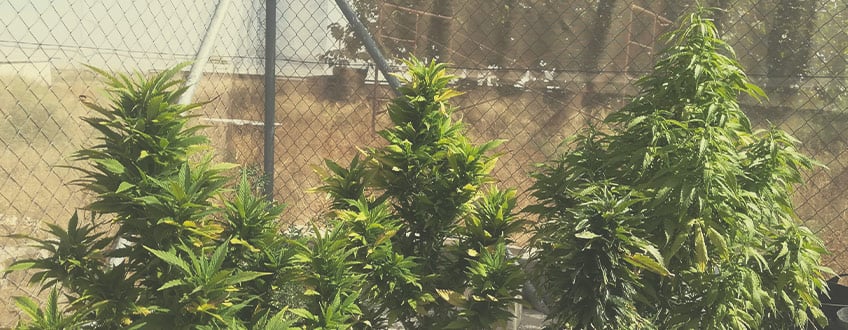
| Northern Light | |
| Northern Light S1 | |
| 500 - 550 gr/m2 | |
| 100 - 160 cm | |
| 7 - 8 weeks | |
| THC: 18% (aprox.) / CBD: Medium | |
| 0% Sativa, 100% Indica, 0% Ruderalis | |
| 575 - 625 g/per plant (dried) | |
| 180 - 220 cm | |
| Late September | |
| A combination of stoned + high |
Northern Light
| Northern Light S1 | |
| 500 - 550 gr/m2 | |
| 100 - 160 cm | |
| 7 - 8 weeks | |
| THC: 18% (aprox.) / CBD: Medium |
| 0% Sativa, 100% Indica, 0% Ruderalis | |
| 575 - 625 g/per plant (dried) | |
| 180 - 220 cm | |
| Late September | |
| A combination of stoned + high |
• Royal Cheese (fast flowering)
This lightning-fast lady is a safe and rewarding option for growers in southeast Belgium. Royal Cheese will be ready to harvest way before the first frost and provides a well-balanced high that chills out the body and lights up the mind. Her colourful purple-green buds offer tastes of earthiness alongside classic Cheese. Expect to harvest 550–600g/plant after a brief flowering time of 6–8 weeks.
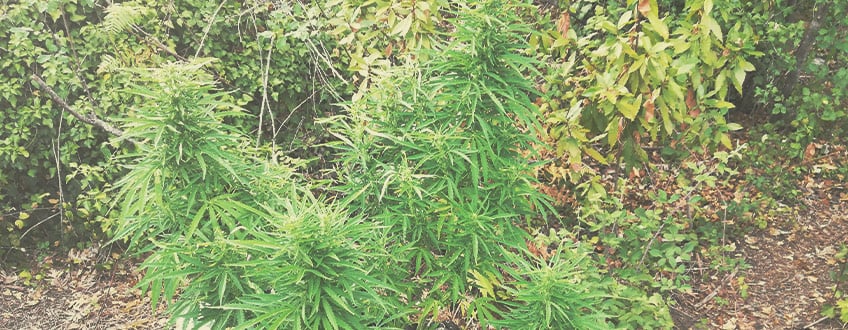
| Royal Cheese (Fast Flowering) | |
| Old School Skunk x Afghani | |
| 550 - 600 gr/m2 | |
| 60 - 100 cm | |
| 6 - 8 weeks | |
| THC: 17% (aprox.) / CBD: Medium | |
| 40% Sativa, 60% Indica, 0% Ruderalis | |
| 550 - 600 g/per plant (dried) | |
| 130 - 200 | |
| Early October | |
| A combination of stoned + high |
Royal Cheese (Fast Flowering)
| Old School Skunk x Afghani | |
| 550 - 600 gr/m2 | |
| 60 - 100 cm | |
| 6 - 8 weeks | |
| THC: 17% (aprox.) / CBD: Medium |
| 40% Sativa, 60% Indica, 0% Ruderalis | |
| 550 - 600 g/per plant (dried) | |
| 130 - 200 cm | |
| Early October | |
| A combination of stoned + high |
Buy Royal Cheese (Fast Flowering)
• Amnesia Haze
Growers with greenhouses can extend the growing season in Belgium, allowing them to crop sativa beasts like Amnesia Haze. This successor of the original Amnesia Haze is a towering hybrid that offers a superb yield. Expect 650–700g/plant of large colas that will set your mind alight with a THC level of 22%. Enjoy earthy and citrusy notes with every hit.
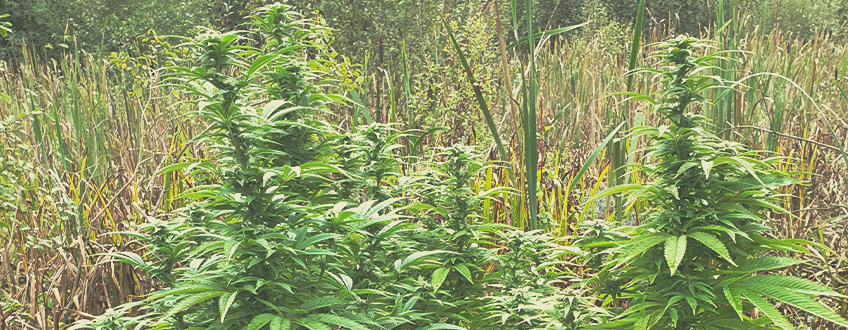
| Amnesia Haze | |
| Original Amnesia Haze | |
| 600 - 650 gr/m2 | |
| 80 - 140 cm | |
| 10 - 11 weeks | |
| THC: 22% (aprox.) / CBD: Medium | |
| 70% Sativa, 30% Indica, 0% Ruderalis | |
| 650 - 700 g/per plant (dried) | |
| 175 - 210 cm | |
| Late October | |
| Extremely high, long-lasting, body relaxing |
Amnesia Haze
| Original Amnesia Haze | |
| 600 - 650 gr/m2 | |
| 80 - 140 cm | |
| 10 - 11 weeks | |
| THC: 22% (aprox.) / CBD: Medium |
| 70% Sativa, 30% Indica, 0% Ruderalis | |
| 650 - 700 g/per plant (dried) | |
| 175 - 210 cm | |
| Late October | |
| Extremely high, long-lasting, body relaxing |
START GROWING CANNABIS IN BELGIUM!
Growers in Belgium have it good compared to many places in Europe. They have an abundant supply of water, a reasonable amount of sunny days, and a lenient policy when it comes to small growing operations. The biggest challenge will be mould, but this can easily be overcome with tarps, greenhouses, and close monitoring of flowers during bloom. Good luck this season, and may the ganja gods bless your harvest!


























